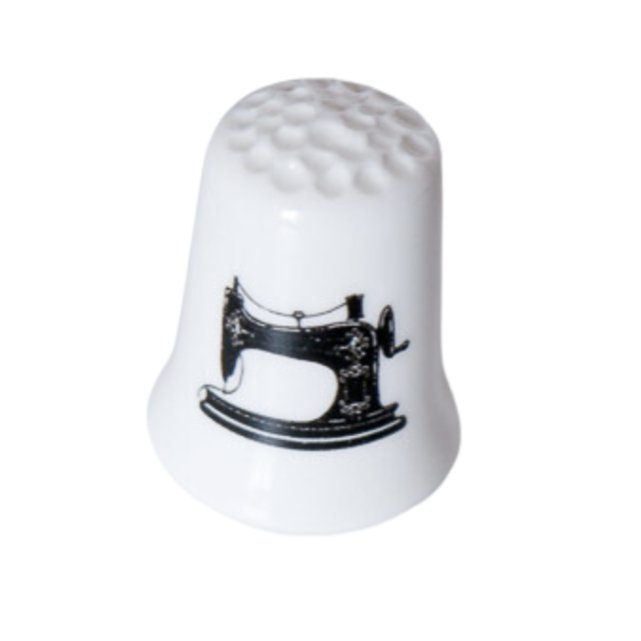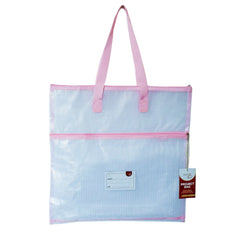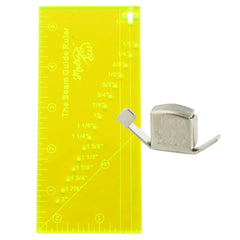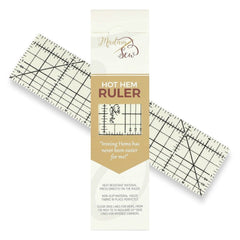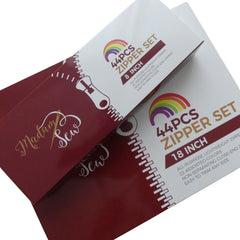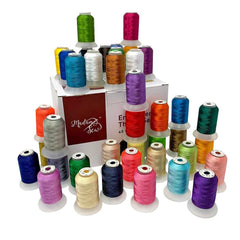Easy Pot Holder Sewing Tutorial
Customize your kitchen accessories and sew your own pot holder with this free tutorial.
This pot holder is a bit like an oven mit. It protects your whole hand with two pockets: one for your thumb and one for the other fingers. The finished size is 9 by 5 inches. I added a little loop to hang it with my kitchen towels. It is insulated with terry cloth fabric from an old bath towel and a layer of cotton quilt batting.
The rectangular shape of this pot holder makes it easy to sew. There are no curved lines, there is no quilting or binding with bias tape. Both these elements make it a project that won’t take much time, is suitable for beginners, and also perfect for last-minute diy personalized gifts.
In the tutorial below, I’ll guide you through the process of creating a sturdy and stylish pot holder from start to finish. Whether you're a seasoned sewer or a beginner looking for a manageable project, this guide is for you. Let's get started on crafting a functional piece that will add a personal touch to your kitchen decor.
Finished Size: 9 by 5 inches
Time needed: half an hour to 1 hour
Skill level: beginner
Tools: basic sewing tools + a walking foot
Materials needed
Before you begin, gather the following materials to make a pot holder:
-
Cotton Fabric:
- 2 pieces of 10 x 5,5 inches (1 for the lining and 1 for the outer fabric)
- 2 pieces of 9 x 5,5 inches (for the pockets)
- 1 strip of 8 by 2 inches (for the loop)
- Terry Cloth Fabric: 1 piece of 10 x 5,5 inches (for the insulation)
- Cotton Batting: 1 piece of 10 x 5,5 inches (for the insulation)
As the fabric pieces are relatively small, you can use fabric scraps that you have from other projects. I would advise to use 100% cotton fabric for the main fabric pieces as cotton is easily washable, durable and naturally heat-resistant.
For the insulation you can buy specialized materials like Insul-bright or Thermolam but regular cotton batting and repurposed household materials such as old bath towels, denim, or wool are also effective fabrics to use as insulation. Make sure that the materials you use are thick enough and free of any residues that could be hazardous when exposed to heat.
Basic sewing tools to have at hand when you start sewing:
- Sewing machine
- A sturdy needle (80 or 90)
- Matching threads
- Ironing board and hot iron
- Temporary fabric markers
- Fabric scissors or a rotary cutter with mat and ruler
- Pins or clips
- A sewing stiletto
- Seam ripper (maybe)
- A walking foot
- A hand needle
I used thread from our new Madam Sew cotton thread set to sew this pot holder. The quality of this thread is great, price is good and the sand and stone colors are very versatile and fit almost any type of fabric.
You might have noticed that I added the walking foot to the supplies list. It is not an absolute must but if you are sewing thick layers, it is a big help and makes it much easier. Check out our blog post about the walking foot here and make up your mind if this foot could help you.
Step-by-Step Instructions for the Pot Holder
When you have the materials and gathered the tools, we can get to the sewing, which will be very fast.
Follow these eight steps to sew a pot holder.
1. Cut the Pieces
Measure, mark and cut the fabric pieces and insulation to the indicated size, if you haven’t already. The dimensions below are the same as the ones listed above in the ‘materials section’.
- Lining Fabric: 1 piece 10 x 5,5 inches
- Outer Fabric: 1 piece 10 x 5,5 inches
- Pockets: 2 pieces of 9 x 5,5 inches
- Loop: 1 piece 8 x 2 inches
-
Insulation:
- 1 piece of cotton batting 10 x 5,5 inches
- 1 piece of terry cloth fabric 10 x 5,5 inches
2. Sew the Loop
Go to your iron board. Fold the strip for the loop in half lengthwise. Press. Fold the long edges towards that fold and press again. Leave it folded so no long raw edges are showing and add pins or clips.
Edge stitch through all layers on bot long sides of the folded strip. I will add the strip to the project in step 5.
3. Sew the Pockets
Fold your pocket pieces in half, pretty side showing, and press the fold. Line up the raw edges of both the folded pocket pieces on the right side (pretty side) of the lining fabric piece. The folds are in the middle and both pocket pieces are aligned with the short edges of the lining piece.
Put some pins in place and baste stitch these layers with your machine as close to the edge as possible. Your pockets are now held in place.
4. The Insulation Layers
Position the two insulation layers, terry cloth and cotton batting, on the wrong side of the outer fabric piece. If you want to, baste these layers together so they will stay in place in the next step. Stay close to the edge when basting so the stitching won’t show and you don’t have to take it out.
If you notice while basting that your sewing machine has trouble sewing over the thick layers, you might want to try a walking foot. If you are sewing a lot with batting, I think you should check it out. It prevents the layers from bunching up and shifting while you sew. It can save you a lot of frustration.
5. Assemble the Pot Holder
Place the piece with the pockets on top of the piece with the insulation, right sides together. Don’t forget to position the loop in between both layers, double folded, raw edges aligned with the edge of the fabric pieces. I like my loop at the short side but you can position it wherever you want. Use sewing clips to hold the layers together and the loop in place.
Mark where you want to leave a turning hole. Make it 2 to 3 inched wide so you can push the fabric through easily. I have a tendency to forget the turning hole - seam ripper to the rescue - or to make it too small and then I’m ripping the seam open when pushing and pulling the whole thing through.
Stitch all the way around (and don’t forget the turning hole :-)))) at 3/8th of an inch. I try to stitch a little more to the middle compare to the basting, so the basting stitches will not show. Backstitch at the start and the end of the turning hole. I used my walking foot to sew these thick layers together. Backstitching is hard with a walking presser foot as the foot pushed the fabric forward from the top and doesn’t listen to what the sewing machine is saying (go back go back).
6. Trim the Edges
Trim the corners so they turn out nice and neat. If necessary trim the edges (seam allowances) a little too, so they are not bigger than a quarter inch.
7. Turn the Pot Holder Right Sides Out
Reach in between the two main pieces and turn the project right side out. Poke out the corners so they look like a corner. I use a sewing stiletto that we sell at MadamSew.com, the magic wand, to do this. It is nice because it doesn’t damage the fabric and you can put enough pressure on it. A plastic chop stick will also do the trick.
Now press all the edges so this looks like a neat rectangle and press the turning hole edges in as if you had sewn it.
8. Topstitch
Place a couple of clips where the opening is and topstitch all the way around at a quarter inch from the edge. Again I’m using my walking foot. When you reach a corner, stop ¼ inch away from the edge, put your needle down, lift the presser foot, turn the project 90 degrees and put the presser foot back down to continue sewing. To finish off, just stop, leave a couple of inches of thread tail, and lock the thread in place with a hand stitch and hide the thread.
This simple pot holder mit project not only enhances your sewing skills but also adds a personal touch to your kitchen essentials. Customizing your pot holders with different fabrics and patterns allows you to create unique and functional pieces. Plus, they make fantastic handmade gifts for friends and family. As they are so easy and fast, they are great to batch sew and make multiple gifts for the whole family. Keep practicing and experimenting with different designs, and soon you'll have a collection of beautiful, homemade pot holders to show off.
By following these steps, you'll have a durable and attractive pot holder ready for use in your kitchen. Don't forget to share your creations on social media or with sewing communities to inspire others and showcase your handiwork.
Interested in other easy sewing projects, free and explained like this one? We have plenty on our sewing blog and new ones are published every week!
Happy sewing!
An
Blogging for Madam Sew
Download the free pot holder tutorial here










